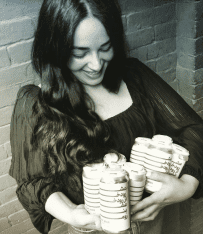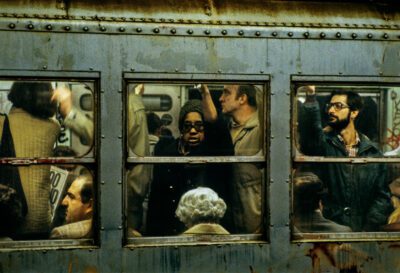Sumac Gose (courtesy Back Home Beer)
Born in Iran … and brewed in Brooklyn
Zahra Tabatabai, the founder of Back Home Beer, discusses bringing Persian-inspired brews to the borough
Zahra Tabatabai wasn’t always a professional brewer. A former journalist, she got her start brewing in her Brooklyn apartment and bottling her concoctions for friends and family when her son was a baby. A first-generation Iranian American, Tabatabai was motivated by stories of her late grandfather’s homebrewing operation in the Southern city of Shiraz.
“I picked up the hobby of homebrewing, really just to recreate some of my grandfather’s old recipes,” she says. Tabatabai started small, took classes with homebrewers at Bitter and Esters, and joined a homebrewing club.
Today, Tabatabai’s experiments have blossomed into a craft brewery named Back Home Beer. She launched her first brew in the last two weeks, and it has already sold out at restaurants and breweries across the city. Her Sumac Gose is infused with her grandfather’s ingredients and flavors Native to the Middle East: cured sumac sourced from Turkey, sour cherries (a popular fruit in Iran), and rare Persian blue salt.
“What people don’t realize is that there is such a long history of brewing in the region,” says Tabatabai, 39. “When people think of Iran they think of what it is today, but before the revolution there were breweries, and vineyards, and distilleries. The Iran that my parents and grandfather grew up in was free flowing. I am trying to bring back some pre-revolution recipes and educate people about the history of brewing in the region.”
Although Tabatabai can brew freely in the states, the consumption and production of alcohol in Iran is now strictly forbidden. Tabatabai explains that, despite the risks and restrictions they face, there is still a flourishing community of underground homebrewers and winemakers in Iran. She feels a sense of responsibility to brewers back home, and many have reached out to her with messages of solidarity and support.
“It’s really amazing to see what people are doing with such limited resources,” she says. “They’re making it work and turning out beautiful beers.”


Tabatabai and her babies (courtesy Back Home Beer)
A one-woman show
Back Home Beer is still “very much a one-woman show.” Tabatabai does not have a facility for her operation (yet) but has rented out a space for brewing at Flagship Brewery in Staten Island. She has an office in Gowanus, carts cases around in her 2009 Prius, and works with a beer consultant to scale her recipes. And in between, she’s still brewing test batches at her home in Cobble Hill.
“My goal is to have a rotation of female graphic artists to design our cans,” says Tabatabai. For Sumac Gose, she collaborated with Maryam Naderi, a rising designer based in Tehran. It was Naderi’s idea to inscribe the cans with snippets of Persian poetry.
Along with offering a contemporary spin on the legacy of Iranian beer culture, Tabatabai’s brews are crafted to complement regional cuisine. “Partnering with restaurants that offer Mediterranean and Middle Eastern food is really where I am trying to go,” she says. A host of hotspots have stocked her first batch of kegs and cans, including Brooklyn’s Dar 525, Magdalene, and Masquerade (a new Persian tapas bar in Williamsburg).
Tabatabai is gearing up to drop her second beer, a Persian Blue Lager, later this week. Due to popular demand, she is also doubling up production for her second run of Sumac Gose. It’s safe to say that Back Home Beer is off to a running start–especially with beer lovers in Brooklyn.
“I think people in Brooklyn are ready for anything new,” says Tabatabai, who has lived in New York for the last 16 years. “I have found an inclusive group of people here who are excited to see Middle Eastern beer in a space that has never really had that.”
Since the beginning, Tabatabai’s relatives have been taste-testers and confidantes (“they tried a lot of very bad beer before we got to some good beer”). As Back Home Beer grew from small batches to a 15-barrel system, her family provided generations of insight and guided her brewing process.
“It brings back nostalgia for what Iran used to be,” she tells me. “Someone like my dad—he left Iran and is here now, but he longs for what it was before the revolution. When he was able to drink the beer when he visited recently, and finally in a can rather than a bottle, it made him so happy. It reminded him of back home.”
You might also like 


























